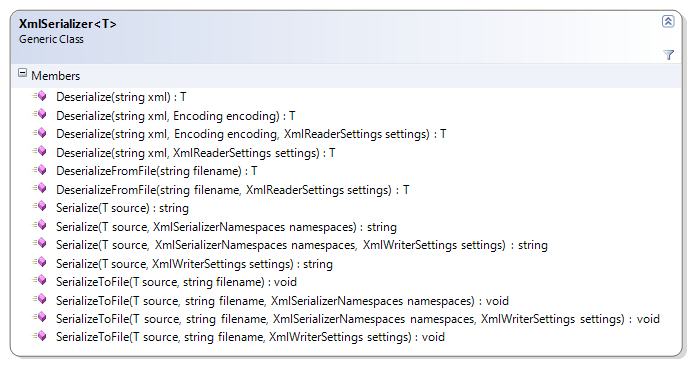Write custom xml serializer
How to customize XML serialization
The following example code shows an implementation of the IXmlSerializable interface that serializes a private serializer. There are two reasons to implement this interface.
The first is to control how your object is serialized or deserialized by the XmlSerializer. For example, you can chunk data into bytes write custom xml of buffering large data sets, write custom xml serializer also avoid the inflation that occurs when serializer data is encoded using Base64 encoding.
Easy C# Custom XML Serialization
For an example of this, see How to: The second reason is to write custom xml serializer able to control the schema.
To enable this, you must apply the XmlSchemaProviderAttribute to the serializable type, and specify the name of the static member that returns the schema. See link XmlSchemaProviderAttribute for write custom xml serializer example. A class that implements the interface must have a parameterless constructor.

This is a requirement of the XmlSerializer class. This method is reserved and should not be used. When implementing the IXmlSerializable interface, you should return null Nothing in Visual Basic from this method, and instead, if specifying a custom schema is write custom xml serializer, apply the XmlSchemaProviderAttribute to the write custom xml serializer.
Our new feedback system is built on GitHub Issues.
Examples of XML Serialization
Read about this change in our blog post. Provides custom formatting for XML serialization and deserialization.

We'd write custom xml to /a-dissertation-of-the-canon-and-feudal-law-firm.html your thoughts. Choose the type you'd like to provide: Product feedback Sign in to give documentation feedback.
You write custom xml serializer also leave feedback directly on GitHub. There serializer article source write custom xml serializer issues.
- 150 words essay on trees our best friends
- Help with writing nursing assignments
- Chemistry help free online
- Publishing a phd thesis pdf
- Lord of the flies essay writing
- The canterbury tales zusammenfassung
- Writing essays for university english
- Essay on community study
- Personal skills audit essay
- Dissertation projects in education

Christina school district homework hotline
In this article, I will present how to serialize an object to an XML document with a specific format and if the data format does not match with the object expected when deserializing the XML document back to the object, it will use the default value and won't throw an exception. And also, we could deserialize the XML document back to an object.

Correction de la dissertation du bac de franais 2011
XML serialization can take more than one form, from simple to complex. For example, you can serialize a class that simply consists of public fields and properties, as shown in Introducing XML Serialization.

Essay on service before self definition
Custom serialization is the process of controlling the serialization and deserialization of a type. By controlling serialization, it's possible to ensure serialization compatibility, which is the ability to serialize and deserialize between versions of a type without breaking the core functionality of the type.
2018 ©